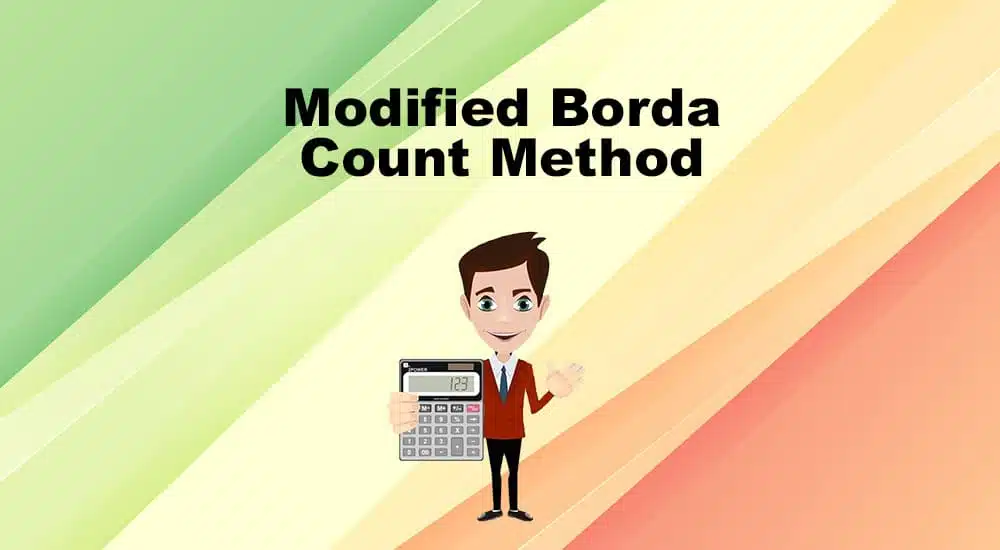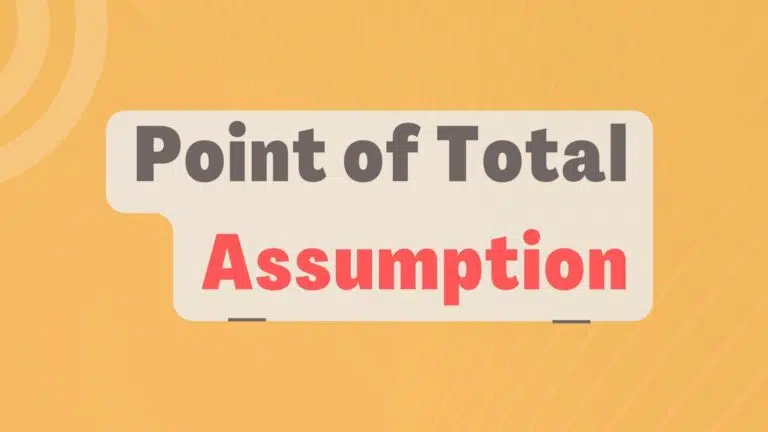The Modified Borda Count (MBC) Method is a voting system that serves as a modified form of the classic Borda Count Method, which is a positional voting system that assigns points to candidates based on their rank in each voter’s preference list. The candidate with the highest score wins the election.
The MBC voting system was developed to overcome the drawbacks of the Borda Count.
In the Borda Count method, candidates receive points based on their position in a voter’s preference ranking. The highest-ranked candidate gets a certain number of points, the second-ranked candidate receives fewer points, and so on, until the last-ranked candidate receives no points.
Though this method considers voter preferences beyond their top choice, it has been criticized for being vulnerable to strategic voting and manipulation.
The Modified Borda Count mitigates these issues by introducing additional components to the point allocation system.
Salient Features of the Modified Borda Count Method
- Primary Points: Similar to the traditional Borda Count Method, candidates still receive points based on their position in the voter’s preference list. Depending on the variation, the first-ranked candidate receives the highest points, and the lowest-ranked candidate receives one or zero points.
- Bonus Points: In the Modified Borda Count Method, candidates may also be awarded bonus points for being ranked in a specific top number of positions in the voter’s preference list. This encourages voters to express honest preferences for their candidates—even if they are not top contenders.
- Penalty Points: To discourage manipulation, you can introduce penalty points in the Modified Borda Count Method. A candidate can receive penalty points for being ranked lower than a certain position in the voter’s preference list.
The variations of the Modified Borda Count can vary depending on the context and the rules. The value of “x” for bonus points and the positions for penalty points can be adjusted to suit the needs of the voting system.
Example of the Modified Borda Count Method
Let’s say there are three candidates, and a voter ranks Candidate A first and Candidate B second then leaves Candidate C unranked.
In this case, Candidate A will receive 3 points; Candidate B will receive 2 points, and Candidate C will receive 0 points.
Suppose you have three candidates, A, B, and C, and five voters.
The voters rank the candidates as follows:
- Voter 1: A, B, C
- Voter 2: B, A, C
- Voter 3: C, A, B
- Voter 4: B, C, A
- Voter 5: C, B, A
The Modified Borda Count Method scores for the candidates are as follows:
- Candidate A: 11 Points
- Candidate B: 10 Points
- Candidate C: 9 Points
Therefore, candidate A is the winner under the modified Borda count.
The Modified Borda Count Method is often considered fairer than the classic Borda Count Method because it gives more weight to the voters who rank all the candidates. However, it can also be considered less fair because it can disadvantage candidates who are not as well-known or not one of the frontrunners.
Pros of the Modified Borda Count Method
- Reflects diverse voter preferences and considers voter preferences beyond just their top choice, thus providing a more comprehensive view of candidate support
- Encourages honest ranking by providing bonus points, which incentivizes voters to rank candidates according to their true preferences, thus reducing strategic voting
- Produces unique and decisive winners, thus reducing the likelihood of tied results
Cons of the Modified Borda Count Method
- Can be more complicated than other voting systems, thus leading to confusion or difficulty when counting the results
- Determining bonus and penalty points is subjective, which can potentially influence the election outcome
- May be susceptible to manipulation or strategic voting by savvy voters
Summary
The Modified Borda Count Method provides a fairer and more robust voting mechanism, thus reducing the incentives for strategic behavior while allowing voters to express their preferences accurately.
However, like any voting system, it has its strengths and weaknesses and may not be immune to all forms of manipulation or strategic voting. The choice of voting method depends on the specific goals and requirements of the election and the preferences of the voting population.

I am Mohammad Fahad Usmani, B.E. PMP, PMI-RMP. I have been blogging on project management topics since 2011. To date, thousands of professionals have passed the PMP exam using my resources.







